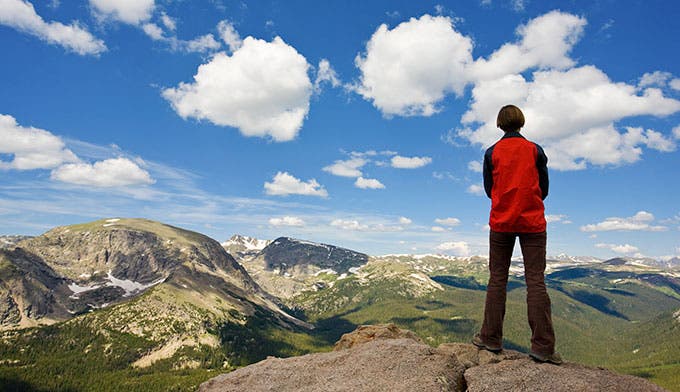No, You Can't Name a Colorado Peak That!

'iStock'

With 53 mountains that exceed 14,000 feet in elevation, Colorado has too many peaks to list. The Rocky Mountain front range runs just west of Denver so the west two-thirds of the state are filled with peaks. Not all of them are named.
How Are Colorado Mountains Named?
The Federal Government has the last say on landscape feature names with its U.S. Board on Geographic Names. But it all starts at the state level with the Colorado Board on Geographic Names. Do you want to name a peak? Simply fill out an application with the Colorado Board. Just don’t expect it to be approved.
George Orlowski served on the state board for the last 17 years and he told Colorado Public Radio that he doesn’t think everything needs a name.
To get approval, the name has to have a direct association with the geographic feature or at least have wide support by the public. Plus, the name should honor the subject. This explains why a request to name a rock feature in Rocky Mountain National Park “Daniel’s Doghead Rock” was rejected.
History of Names in Rocky Mountain National Park
Longs Peak is named after Major Stephen Long, who explored the area in the 1820s.
Bierstadt Lake and Mount Bierstadt (near Georgetown, Colorado) are named after painter Albert Bierstadt (1830-1902). He was brought to the Rocky Mountain National Park area in 1876 by the Earl of Dunraven, a wealthy Irish aristocratic that nearly succeeded in owning all of Estes Park. The Earl commissioned Bierstadt to paint a large landscape of Estes Park and Longs Peak.
Sprague Lake is named after Abner Sprague, who started a homestead west of Estes Park in 1874. He opened a lodge for dude ranching, hunting, and fishing. To improve the fishing, he built a dam creating Sprague Lake. The area became part of Rocky Mountain National Park in 1915, and the resort continued to serve guests as the Sprague Hotel. Alberta Falls was named after Abner Sprague’s wife.
The Never Summer Mountains were named so because there are pockets of snow year-round.
Paul Bunyan’s Boot was named for the rock’s shape that looks like a giant’s boot with a hole in the sole.
But Daniel’s Doghead Rock? Nope.